Grind Game
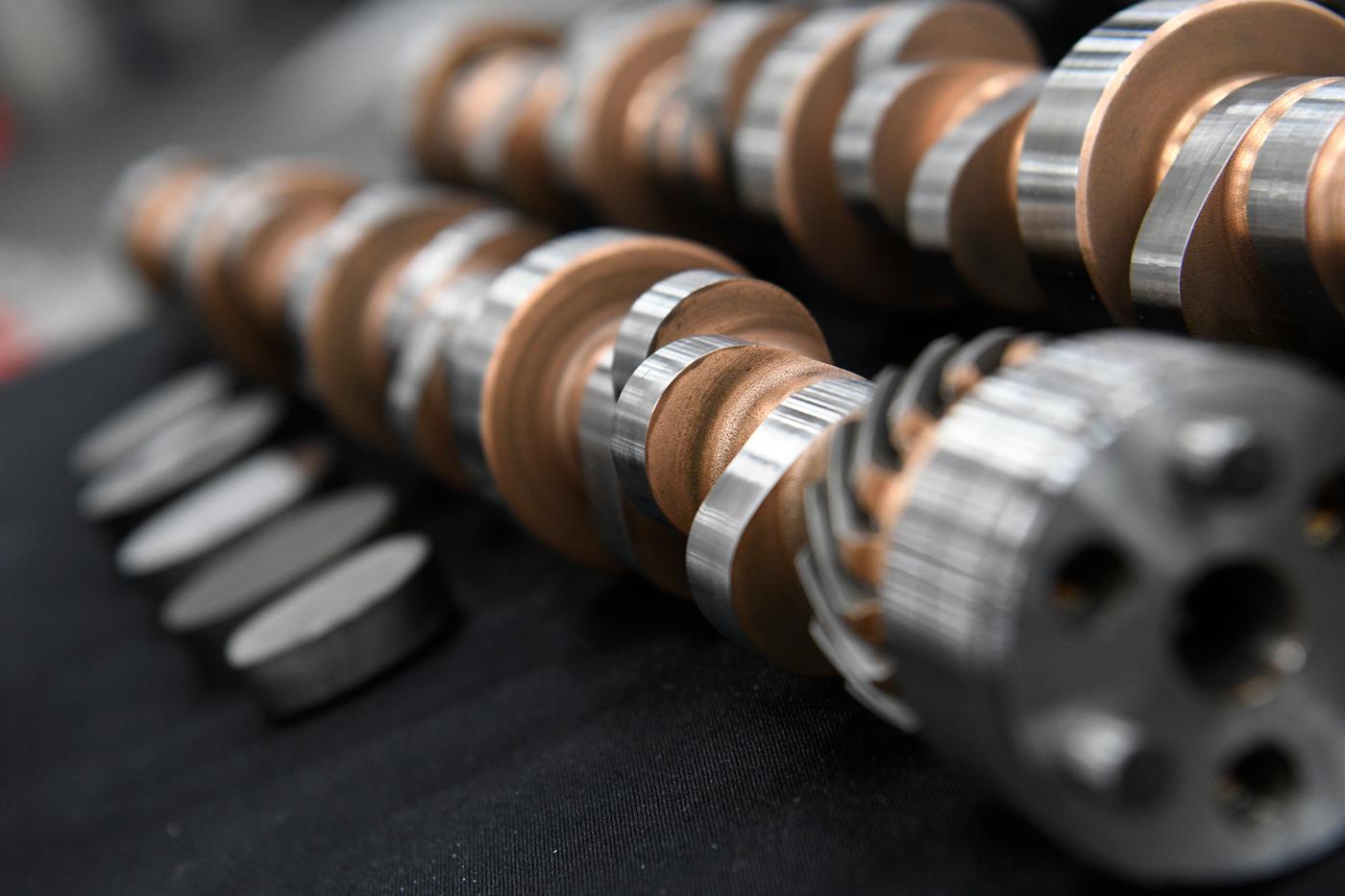
Custom camshafts are gaining popularity as racing needs become more specific and engine builders feel more confident that they can find a winning edge with their combinations.
There was a 24-hour endurance team that told its camshaft supplier the engine needed more low-end performance because of changing driver dynamics at night.
“Drivers would be less apt to grab a lower gear out of the corner late at night, so torque production was key,” explained Chris Potter of COMP Cams, Olive Branch, Mississippi. “However, the engine needed to run at race pace for more than 24 hours. A custom grind and new lobe series were the answers this team needed to meet their goals.”
Years later, that lobe-design family became one of the most popular choices for non-race applications at COMP Cams. “That shows that race technology trickles to the street, even in the world of camshaft lobe design,” added Potter.
In other examples that tout custom cam rewards, COMP Cams’ engineers helped a bracket racer with a 582-cubic-inch big block Chevy project and a circle track team with a GM Ecotec I4 engine.
“We worked through the BBC system, which was limited by the cylinder head, and moved to a newer lobe series matched with good springs. It picked up peak power by 10%,” recalled Potter. “Another example is the Ecotec owner who had maxed out our catalog cams while running circle track races. Last year, we helped with a custom grind and picked up the performance significantly. Since then, he’s been able to refine his package even further while working on a new cylinder head package. This year we’re doing another set of custom grinds to further his platform.”
Depending on the application, custom camshafts can make up 70% or more of a cam company’s sales, easily outperforming off-the-shelf cams for select categories. Some companies don’t even have cams with designated grinds and part numbers in their immediate inventory.
“We’ve found that making cams and putting them on the shelf doesn’t really fill the need that customers have,” said John Partridge of Bullet Racing Cams, Olive Branch, Mississippi. “Sure, there’s a standard combination out there for a 350 or a 383, but I try to look at everything that customers are doing to be sure that I give them the best I can the first time.”
Over at Crower Cams in San Diego, California, most of the simple stock-engine-type applications with hydraulic or solid flat-tappet lifters are generally purchased from the catalog.
“That would be about 70% catalog or standard off-the-shelf grinds,” observed Guy Aguayo. “We’ve had some grinds that work well across the board. The majority of the roller cams are custom ground because of power adders, nitrous, big compression, and big cubic inch. The size of cams keeps getting bigger because of better flowing heads.”
Nolan Jamora at Isky Racing Cams in Gardena, California, said the split between custom and off-the-shelf at Isky depends on the race venue. “If it’s drag racing, it’s about 20% off-the-shelf and 80% custom,” he said. “It’s a big difference because of the Outlaws, drag-and-drive, and small-tire racing. We’re customizing all that because everything is power adder. There are just so many combos out there, and product right off the shelf is not going to work anymore.”
There are engine combinations that remain quite popular, such as a 632-cubic-inch tunnel ram with a pair of Dominator carbs, for which a shelf cam will be appropriate. However, a basic boost-prepped engine can have different-sized turbos, an intercooler or not, etc. Even street engines, added Jamora, that step up to turbos should be evaluated for a custom cam.
“Boost applications have enough variables—such as displacement, static compression, amount of boost at different loads, etc.—that custom cams are the norm rather than the exception,” added Eric Bolander of Howards Cams, based in Oshkosh, Wisconsin.
Playing Within the Rules
In oval and dirt track racing, sanctioning bodies have introduced numerous rules to regulate camshaft design, and companies have to engineer the best possible profile to stay within the guidelines.
“In oval track, the split between custom and off-the-shelf is about 50/50,” said Jamora. “We have vacuum-rule cams or compression-rule cams, those are pretty much all set depending on the cubic inch. Racers can get those right off the shelf since that’s pretty cut and dry.”
Isky also offers lift-rule cams that in the early days were designed to “lob” the lifter off the cam lobe nose to gain a little extra lift. That strategy is no longer favored.
“Yeah, we do lift-rule cams, where 0.400-, 0.420-, 0.450-, 0.480- or 0.500-inch lift rule,” said Jamora, explaining the lobe design favors more contact with the lifter. “You don’t lob the lifter anymore. You want the lifter on the lobe at all times. With the new modern design, and how you can grind it, you can get very aggressive, so you don’t have to design loft into them, which is just unstable for the valvetrain.”
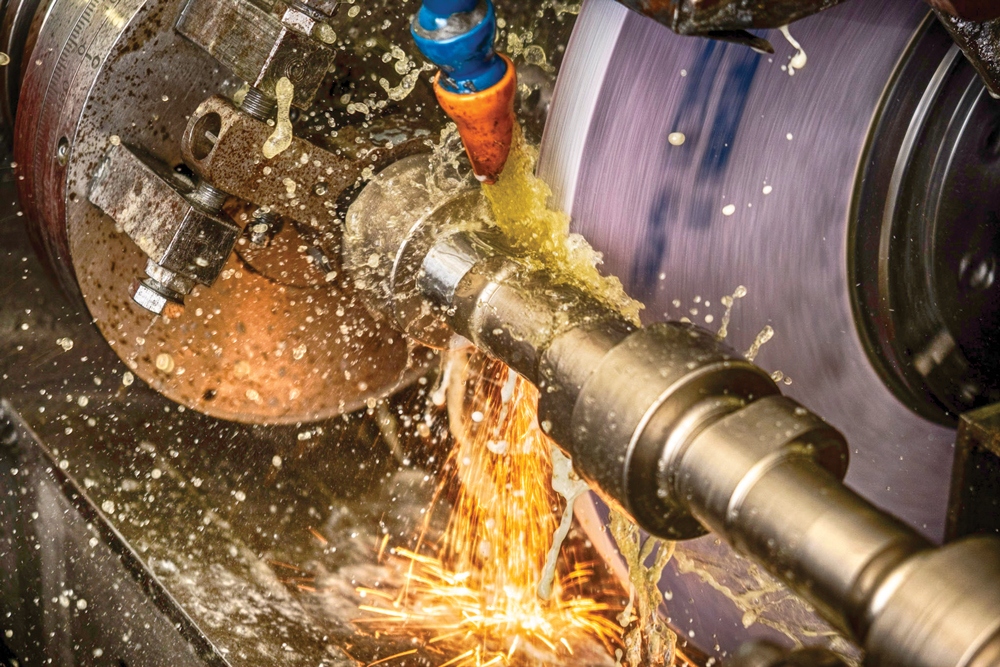
Crower keeps the lifter close to the lobe when designing a lift-rule camshaft. Engineers also manipulate the lobe-separation angles when working with vacuum-rule camshafts.
“We’ll open up the lobe-separation,” said Aguayo. “Because you’re not making a lot of power, the weight of the car comes into play. Then, if it’s two- or four-barrel, another little curve comes into play. The two-barrels tend to work a little bit different torque-band than a four-barrel. The race track makes a big difference, too. I need to know their max rpm and their slow rpm off the corner, so they don’t come off the corner under a bad load. The driver makes a big difference.”
Feeding Information
As previously mentioned, camshaft tech reps are requesting more information about the drivers’ racing style and preferences.
“I’ll ask what’s the track like? Do they run the cushion? Does the driver like to dive into the corners or get on the brakes early? Is he young and aggressive? So we’ll actually do the cam for that,” said Jamora.
The difference in driving style—that is, one who likes to brake early or one who carries speed into the corner—may mean a difference of three or four degrees duration in the lobe design.
“You’re really talking about keeping them in the power band,” added Jamora. “If they’re basically a stop-and-stab style, we’ll need to have more torque built into the grind. If it’s somebody who rides a cushion and is very smooth, he’s not dropping a lot of rpm, you could keep more mid-range power and torque because he’ll keep the rpm up.”
Besides drivers, engine builders are becoming more appreciative of custom camshafts. There’s a greater sense of confidence when selecting a cam grind that is designed around their specific setup and racing needs.
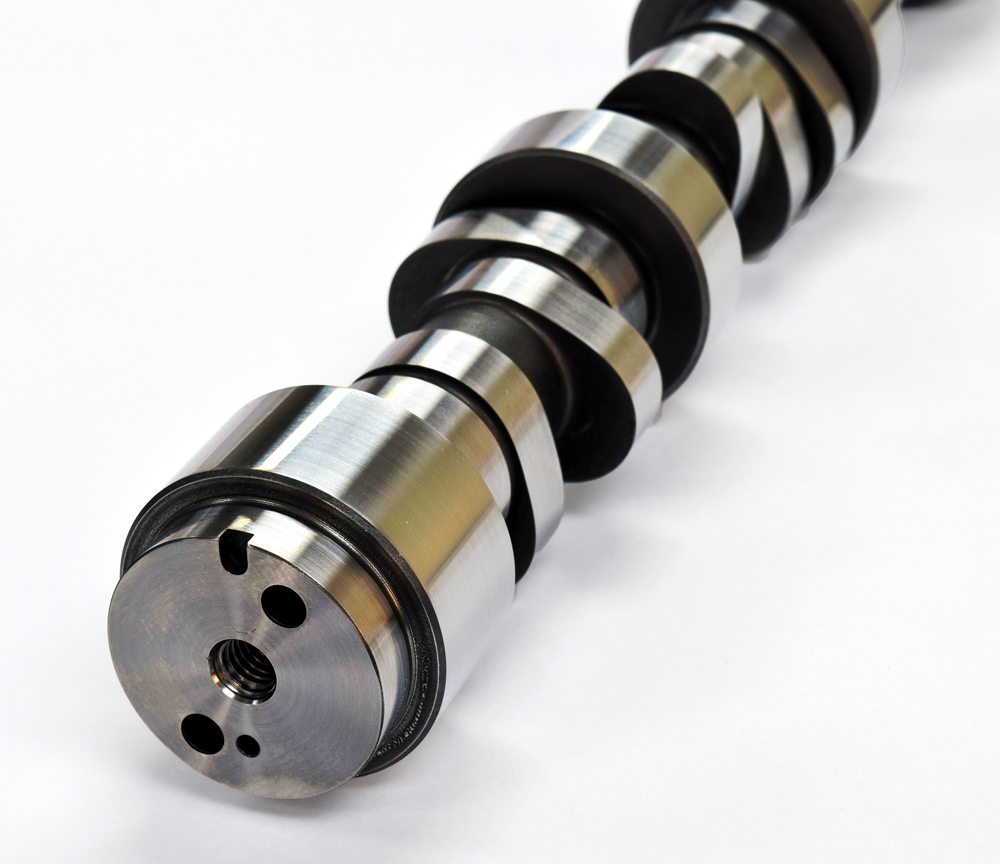
“That is why it’s an advantage to build a relationship with a cam company—more specifically a ‘cam guy.’ He won’t point you at a part number or plug everything into a computer and let a program spew out a part number,” said Bolander. “You want someone who knows why they’re recommending a grind and what it’s going to do for you.”
Working with knowledgeable tech reps at a cam company takes time. There are forms to fill out that help them get started, but the real information comes from their questions and feedback. Key to a productive discussion is honesty.
“That is one of the things we tell our customers up front: Be honest with me. Don’t tell me something you’re going to do. You tell me exactly what you are doing now because it’s going to be really imperative that I have the right information,” explained Partridge. “Don’t give me the pie-in-the-sky deal. I don’t want to recommend something that won’t work for you if you’re not doing what you’re telling me.”
“The basics we need are still the same, things like intended use, displacement, expected rpm, tappet choice, head flow, induction choices, bore/stroke, valve selection, transmission…the more information you provide, the better our team can quickly zone in on a recommendation on the lobe series and valve timing,” explained Potter. “As we approach from a system perspective, more questions are needed. Rocker style, pushrod types, valve spring installed height, spring loads, lifter diameter, journal size, lifter spacing, and more.”
Other information, like cylinder-head flow rates, is also crucial so the tech reps can build a model for a specific combination of parts as well as the intended use of the engine.
“We’ll get everything on the combination, such as cylinder heads, what they flow at certain lifts, the compression ratio, iron or aluminum cylinder block, carbs or fuel injected, header size, gearing, type of fuel, tire…I mean, we get down to everything,” said Jamora.
All this information flow to the cam company’s hotline can beg the question: What if I talk to different tech reps on the same day? Will they recommend the same camshaft?
“Yes, you’re going to get the same information,” said Partridge. “Now, it may vary by a degree or so, but yeah, you’re going to get the same recommendation from anybody here.”
The need for camshafts in airplane engines motivated Callies Performance Products in Fostoria, Ohio, to get into the cam business. Lycoming Aircraft had relied on another cam manufacturer for product that went out of business and approached Callies, which purchased equipment from the liquidation sale.
“Within a matter of months, we were in the camshaft business,” said Nick Norris.
Callies specializes in manufacturing the billet-steel cores used by many aftermarket suppliers that finish-grind custom racing camshafts. Many of these cores are 8620 carburized steel, and there are some induction-hardened cores. The cores are ground with oversized but unfinished lobes in position for the desired firing order. The bearings are ground to the finished size, as is the distributor gear, if needed. Then the cores are heat-treated before shipment to the cam grinders for finishing.
“The firing order, lift, duration, and lobe separation all have to be within a certain envelope in order not to grind through the heat-treat,” added Norris.
Callies will finish-grind the cores for select customers but not on a single custom cam order. Builders with high-volume crate-engine or private-label programs will be considered, or race teams that need a large order of camshafts with similar grinds, like Top Fuel or Funny Car.
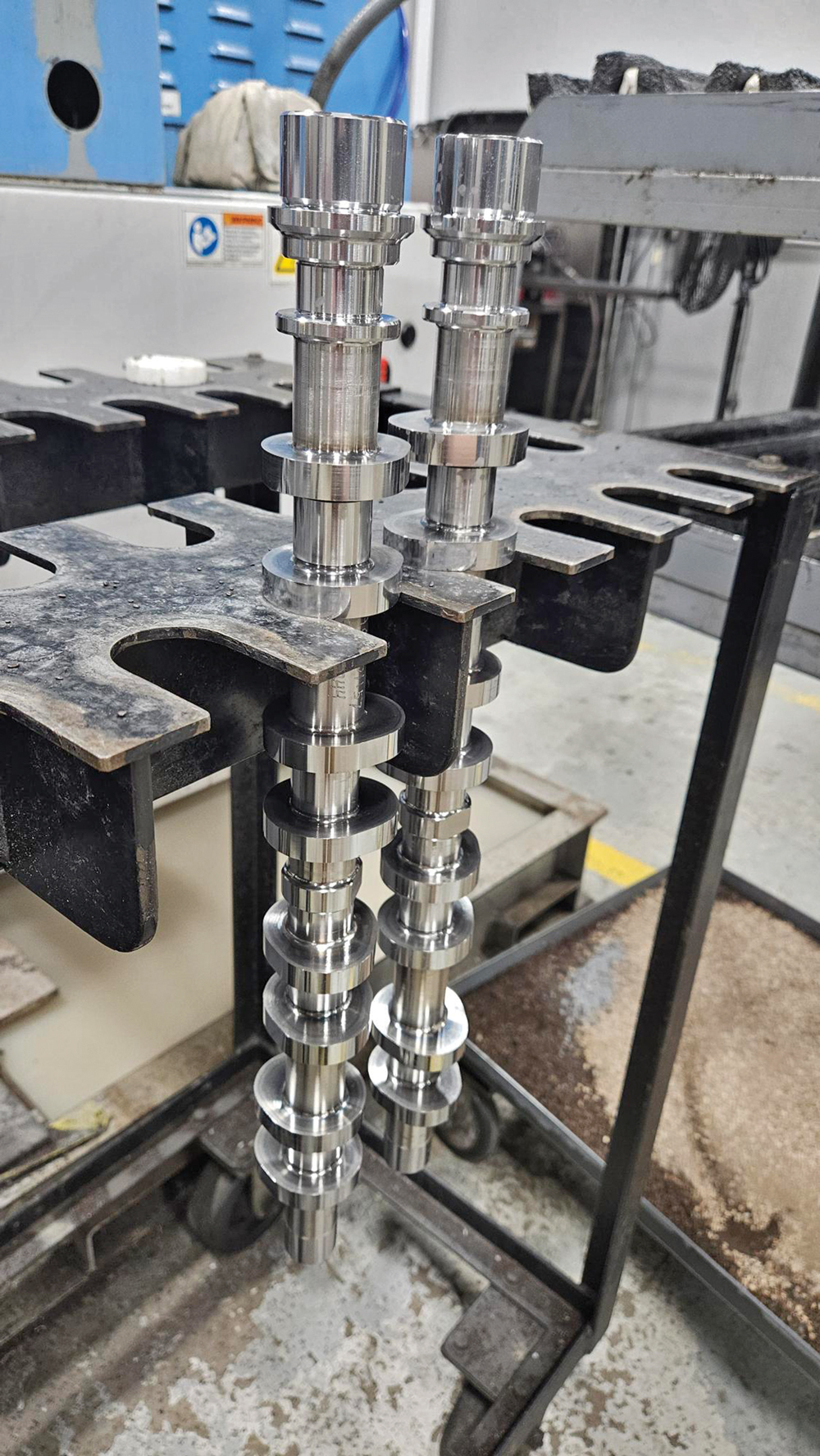
Even though nitro cars have the most powerful engines in motorsports, crew chiefs are burdened by strict rules that have changed very little in the past two or three decades. Therefore, cam specs haven’t changed that much. However, cam grinders are starting to work with fresh ideas to manipulate valve events in fuel engines.
“When we first got into Top Fuel, everybody gathered up and measured cam samples. I was amazed at how close they were to each other. They were nearly identical,” said Norris. “The biggest problem with the fuel cars is the opening side of the exhaust lobe because you have so much cylinder pressure. It has a lot to do with the lash ramp at the beginning of the opening side of the profile. It took four or five tries, but one turned into magic.”
“We have updated some [Top Fuel lobes] in the last year or two,” added Partridge. “We have gotten a little more aggressive than we used to be and found some places that we could push it. And we found some places that we shouldn’t have. The exhaust side really seemed to be the area where I work on the most. The intake doesn’t seem to respond a whole lot, but the exhaust side has.”
Even in the diesel market, especially with the tractor pullers, the exhaust lobe is drawing more scrutiny.
“Depending on the class, they’re running more boost than any drag car thought of. Seriously, diesel tractors run anywhere from 130 to 150 pounds, and in the Outlaw classes as much as 250 pounds,” said Russ Yoder of Erson Cams, Louisville, Kentucky. “This is where a lot of Erson’s Top Fuel experience comes in. We had to calm down the aggressiveness on the exhaust because those engines make so much cylinder pressure. You have to run a fairly mild exhaust profile in order to not blow the lifters apart.”
Yoder said that Erson doesn’t change lobe profiles often, preferring to expand the lobe catalog only when a custom cam grind has proven extremely beneficial to a customer. Erson was also cautious when it was trendy in the industry to make the popular lobe profiles more aggressive without addressing other issues, such as valve springs.
“So many people got on the bandwagon of more aggressive, make more power. When you do that, if you don’t really stay on top of valve springs, inevitably that profile doesn’t work and you end up tearing up parts,” said Yoder. “We can go with something that’s tried and true and not destroying the valvetrain. And honestly, it still gets as much horsepower.”
Supporting Cast
All variants of engines seem to be reaping the benefits of custom cams, and cam designers have been taking advantage of continuing advancements in supporting valvetrain components around the camshaft.
“The evolution in valve springs has really been the key,” said Partridge. “Don’t get me wrong, there are other things, such as better pushrods and rocker arms. But valve springs are what really changed everything. We’re able to run smaller, lighter springs and nowhere near the kind of spring pressure we used to run.”
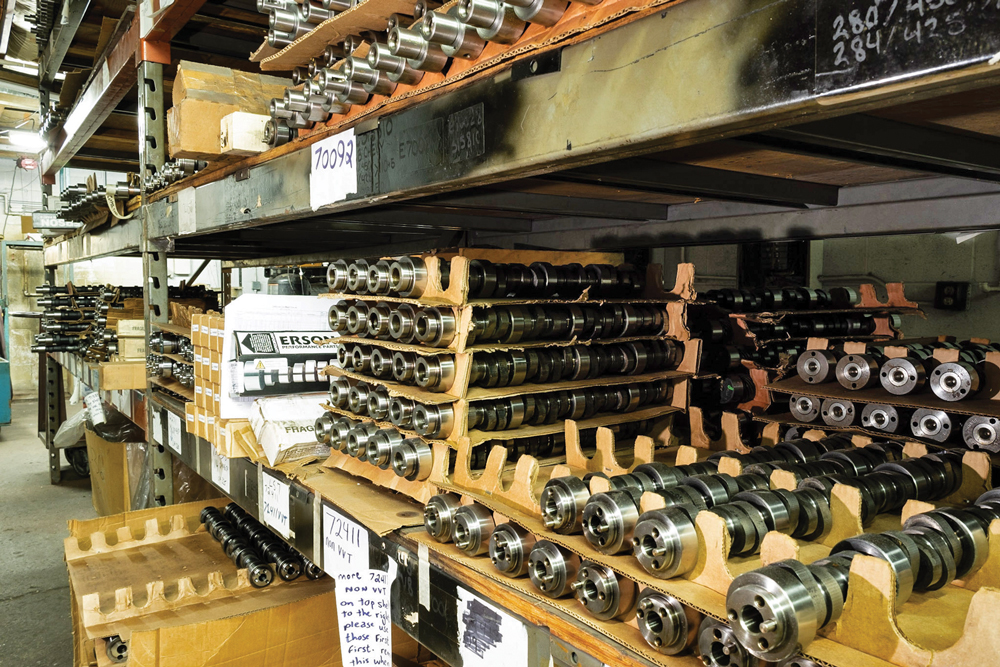
“We’re really paying attention to valve springs,” agreed Norris. “For a long time, people have over-sprung. They put too much valve spring in the system. When they have a valvetrain that gets out of control, the first thing they do is put more spring on it, when in all actuality, they should probably take spring out of it.”
“Getting the lightest valvetrain makes a big difference because the valves will rev more rpm safely,” advised Aguayo. “The bottom line is, if you can check a camshaft on a Spintron and figure out exactly where that valvetrain keeps from entering into harmonics, that’s the cam you want to run because it will live for the long run, like lots of 40-lap mains.”
Even the rest of the drivetrain behind the engine will benefit from the right custom camshaft if all the components are optimized to work together.
“This is even more true on the race side where big power can be put to the ground more efficiently,” said Potter. “Now we’ve moved further into the realm of systems engineering, beyond just the valvetrain system or the engine system, and now into the entire vehicle system. As we have the ability to put more and more power to the ground, the more important a good, engineered custom cam grind will become. As the entire vehicle and engine system becomes more and more refined, the more important a well sorted custom grind will be to match with the other components.”
SOURCES
Bullet Racing Cams
bulletcams.com
Callies Performance Products
callies.com
Cam Motion
cammotion.com
COMP Cams
compcams.com
Crower
crower.com
Erson Cams
pbm-erson.com
Howards Cams
howardscams.com
Isky Racing Cams
iskycams.com
 MEMBERSHIP LOGIN
MEMBERSHIP LOGIN JOIN PRI
JOIN PRI


